 W
WChinese is a group of languages that form the Sinitic branch of the Sino-Tibetan languages, spoken by the ethnic Han Chinese majority and many minority ethnic groups in Greater China. About 1.3 billion people speak a variety of Chinese as their first language.
 W
WChineasy is an Internet startup created with the purpose of teaching characters, created by the entrepreneur Shaolan Hsueh. For visual learners the human brain is able to memorize information better if it is put into a visual context. The approach is to learn Chinese characters with the help of illustrations to help memorize Chinese characters better. The 2014 book Chineasy: The New Way to Read Chinese contains about 400 characters. It was based on her 2013 TED talk and funded via a crowdfunding campaign through Kickstarter.
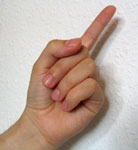 W
WChinese number gestures are a method to signify the natural numbers one through ten using one hand. This method may have been developed to bridge the many varieties of Chinese—for example, the numbers 4 and 10 are hard to distinguish in some dialects. Some suggest that it was also used by business people during bargaining when they wish for more privacy in a public place. These gestures are fully integrated into Chinese Sign Language.
 W
WClassical Chinese, also known as Literary Chinese, is the language of the classic literature from the end of the Spring and Autumn period through to the end of the Han dynasty, a written form of Old Chinese. Classical Chinese is a traditional style of written Chinese that evolved from the classical language, making it different from any modern spoken form of Chinese. Literary Chinese was used for almost all formal writing in China until the early 20th century, and also, during various periods, in Japan, Korea and Vietnam. Among Chinese speakers, Literary Chinese has been largely replaced by written vernacular Chinese, a style of writing that is similar to modern spoken Mandarin Chinese, while speakers of non-Chinese languages have largely abandoned Literary Chinese in favor of their respective local vernaculars. Although languages have evolved in unique, different directions from the base of Literary Chinese, many cognates can be still found between these languages that have historically written in Classical Chinese.
 W
WThe following is a list of countries and territories where Chinese is an official language. While those countries or territories that designate Chinese as an official language use the term "Chinese", as Chinese is a group of related language varieties, of which many are not mutually intelligible, in the context of the spoken language such designations are usually understood as designations of specific varieties of Chinese, namely Cantonese and Standard Mandarin. In the context of the written language, written modern standard Chinese is usually understood to be the official standard, though different territories use different standard scripts, namely Traditional Chinese characters and Simplified Chinese characters.
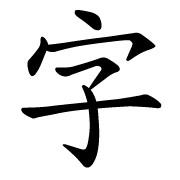 W
WA courtesy name, also known as a style name, is a name bestowed upon one at adulthood in addition to one's given name. This practice is a tradition in the East Asian cultural sphere, including China, Japan, Korea, and Vietnam.
 W
WDifferences between Shinjitai and Simplified characters in the Japanese and Chinese languages exist.
 W
WThe four tones of Chinese poetry and dialectology are four traditional tone classes of Chinese words. They play an important role in Chinese poetry and in comparative studies of tonal development in the modern varieties of Chinese, both in traditional Chinese and in Western linguistics. They correspond to the phonology of Middle Chinese, and are named even or level, rising, departing or going, and entering or checked. Due to historic splits and mergers, none of the modern varieties of Chinese have the exact four tones of Middle Chinese, but they are noted in rhyming dictionaries.
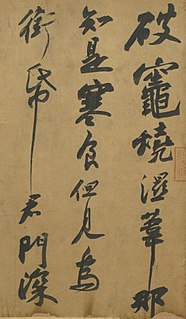 W
WMany East Asian scripts can be written horizontally or vertically. Chinese, Japanese, Vietnamese Chữ Nôm and Korean scripts can be oriented along either axis, as they consist mainly of disconnected logographic or syllabic units, each occupying a square block of space, thus allowing for flexibility for which direction texts can be written, be it horizontally from left-to-right, horizontally from right-to-left, vertically from top-to-bottom, and even vertically from bottom-to-top.
 W
WShaoLan Hsueh is a London-based Taiwanese author, designer, venture capitalist, tech entrepreneur, podcast host, speaker, and the creator of Chinese language learning system Chineasy. As a college undergraduate in Taiwan, she wrote several bestselling software books that were widely distributed by Microsoft, and co-founded Internet company pAsia. In 2005, while studying for a master's degree at Cambridge, she founded Caravel Capital. Hsueh introduced Chineasy during a 2013 TED Talk, and subsequently authored several books and other learning tools to distribute the method.
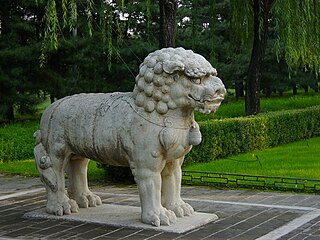 W
W"Lion-Eating Poet in the Stone Den" is a short narrative poem written in Classical Chinese that is composed of about 94 characters in which every word is pronounced shi when read in present-day Standard Mandarin, with only the tones differing.
 W
WLiteromancy, from the Latin litero, "letter", mancy, "divination", is a form of fortune-telling based on written words, or, in the case of Chinese, characters. A fortune-teller of this type is known as a literomancer.
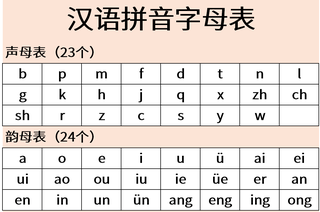 W
WHanyu Pinyin, often abbreviated to pinyin, is the official romanization system for Standard Mandarin Chinese in mainland China and to some extent in Taiwan and Singapore. It is often used to teach Standard Mandarin, which is normally written using Chinese characters. The system includes four diacritics denoting tones. Pinyin without tone marks is used to spell Chinese names and words in languages written with the Latin alphabet and also in certain computer input methods to enter Chinese characters.
 W
WSimplified Chinese characters are standardized Chinese characters used in Mainland China, Malaysia and Singapore, as prescribed by the Table of General Standard Chinese Characters. Along with traditional Chinese characters, they are one of the two standard character sets of the contemporary Chinese written language. The government of the People's Republic of China in mainland China has promoted them for use in printing since the 1950s and 1960s to encourage literacy. They are officially used in the People's Republic of China, Malaysia and Singapore, while traditional Chinese characters are used in Hong Kong, Macau, Taiwan as well as South Korea to a certain extent and occasionally in the Chinese community of Malaysia and Singapore.
 W
WSinophone means "Chinese-speaking", typically referring to a person who speaks at least one variety of Chinese. Academic writers use the term Sinophone in two ambiguous meanings: either specifically "Chinese-speaking populations where it is a minority language, excluding Mainland China, Hong Kong, Macau, and Taiwan" or generally "Chinese-speaking areas, including where it is an official language". Many authors use the collocation Sinophone world or Chinese-speaking world to mean the Chinese-speaking world itself or the distribution of the Chinese diaspora outside of Greater China.
 W
WTaiwanese Mandarin or Guoyu refers to any of the varieties of Mandarin Chinese spoken in Taiwan. This comprises two main forms: Standard Guoyu and Taiwan Guoyu.
 W
WTetraphobia is the practice of avoiding instances of the digit 4. It is a superstition most common in East Asian nations.
 W
WIn tonal languages, tone names are the names given to the tones these languages use.
 W
WTong Wen Tang is a Firefox browser extension that converts Chinese-language web pages between Traditional and Simplified Chinese characters. Thanks to the extension, Chinese-language users can access content written in the other writing system. According to records in forums of Mozilla Taiwan, Tong Wen Tang was firstly developed by Hashao (哈少), a mainland Chinese netizen. However, the edition supported only the Mozilla Firefox 0.9.
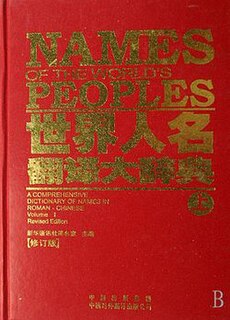 W
WTranscription into Chinese characters is the use of traditional or simplified Chinese characters to phonetically transcribe the sound of terms and names of foreign words to the Chinese language. Transcription is distinct from translation into Chinese whereby the meaning of a foreign word is communicated in Chinese. Since, in mainland China and often in Taiwan, Hanyu Pinyin is now used to transcribe Chinese into a modified Latin alphabet and since English classes are now standard in most secondary schools, it is increasingly common to see foreign names and terms left in their original form in Chinese texts. However, for mass media and marketing within China and for non-European languages, particularly those of the Chinese minorities, transcription into characters remains very common.
 W
WUnited Nations Security Council Resolution 345, adopted on January 17, 1974, after a resolution from the General Assembly, the Council decided to expand the working languages of the Security Council to include Chinese. Along with Chinese, the other four working languages of the Council were English, French, Russian and Spanish.
 W
WLiterary Chinese was the medium of all formal writing in Vietnam for almost all of the history of the country up to the early 20th century, when it was replaced by vernacular writing using the Latin-based Vietnamese alphabet in Vietnam.
 W
WWilliam Shi-Yuan Wang is a linguist, with expertise in phonology, the history of Chinese language and culture, historical linguistics, and the evolution of language in humans. He is Chair Professor at The Hong Kong Polytechnic University, Emeritus Professor of the University of California, Berkeley, and Academician of Academia Sinica.
 W
WWritten Cantonese is the written form of Cantonese, the most complete written form of Chinese after that for Mandarin Chinese and Classical Chinese. Written Chinese was originally developed for Classical Chinese, and was the main literary language of China until the 19th century. Written vernacular Chinese first appeared in the 17th century and a written form of Mandarin became standard throughout China in the early 20th century. While the Mandarin form can in principle be read and spoken word for word in other Chinese varieties, its intelligibility to non-Mandarin speakers is poor to incomprehensible because of differences in idioms, grammar and usage. Modern Cantonese speakers have therefore developed new characters for words that do not exist and have retained others that have been lost in standard Chinese.
 W
WWritten Chinese comprises Chinese characters used to represent the Chinese language. Chinese characters do not constitute an alphabet or a compact syllabary. Rather, the writing system is roughly logosyllabic; that is, a character generally represents one syllable of spoken Chinese and may be a word on its own or a part of a polysyllabic word. The characters themselves are often composed of parts that may represent physical objects, abstract notions, or pronunciation. Literacy requires the memorization of a great number of characters: college-educated Chinese speakers know about 4,000. The large number of Chinese characters has in part led to the adoption of Western alphabets or other complementary systems as auxiliary means of representing Chinese.
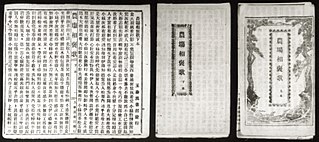 W
WHokkien, a Min Nan variety of Chinese spoken in Southeastern China, Taiwan and Southeast Asia, does not have a unitary standardized writing system, in comparison with the well-developed written forms of Cantonese and Vernacular Chinese (Mandarin). In Taiwan, a standard for Written Hokkien has been developed by the Republic of China Ministry of Education including its Dictionary of Frequently-Used Taiwan Minnan, but there are a wide variety of different methods of writing in Vernacular Hokkien. Nevertheless, vernacular works written in the Hokkien are still commonly seen in literature, film, performing arts and music.
 W
WYou Can Write Chinese is a 1945 picture book by Kurt Wiese. A boy learns to write some basic Chinese characters. The book was a recipient of a 1946 Caldecott Honor for its illustrations.